Intel Core i9-10850K Review: The Real Intel Flagship
by Dr. Ian Cutress on January 4, 2021 9:00 AM EST- Posted in
- CPUs
- Intel
- Core
- Z490
- 10th Gen Core
- Comet Lake
- LGA1200
- i9-10850K
Gaming Tests: Far Cry 5
The fifth title in Ubisoft's Far Cry series lands us right into the unwelcoming arms of an armed militant cult in Montana, one of the many middles-of-nowhere in the United States. With a charismatic and enigmatic adversary, gorgeous landscapes of the northwestern American flavor, and lots of violence, it is classic Far Cry fare. Graphically intensive in an open-world environment, the game mixes in action and exploration with a lot of configurability.
Unfortunately, the game doesn’t like us changing the resolution in the results file when using certain monitors, resorting to 1080p but keeping the quality settings. But resolution scaling does work, so we decided to fix the resolution at 1080p and use a variety of different scaling factors to give the following:
- 720p Low, 1440p Low, 4K Low, 1440p Max.
Far Cry 5 outputs a results file here, but that the file is a HTML file, which showcases a graph of the FPS detected. At no point in the HTML file does it contain the frame times for each frame, but it does show the frames per second, as a value once per second in the graph. The graph in HTML form is a series of (x,y) co-ordinates scaled to the min/max of the graph, rather than the raw (second, FPS) data, and so using regex I carefully tease out the values of the graph, convert them into a (second, FPS) format, and take our values of averages and percentiles that way.
If anyone from Ubisoft wants to chat about building a benchmark platform that would not only help me but also every other member of the tech press build our benchmark testing platform to help our readers decide what is the best hardware to use on your games, please reach out to ian@anandtech.com. Some of the suggestions I want to give you will take less than half a day and it’s easily free advertising to use the benchmark over the next couple of years (or more).
As with the other gaming tests, we run each resolution/setting combination for a minimum of 10 minutes and take the relevant frame data for averages and percentiles.
| AnandTech | Low Resolution Low Quality |
Medium Resolution Low Quality |
High Resolution Low Quality |
Medium Resolution Max Quality |
| Average FPS | 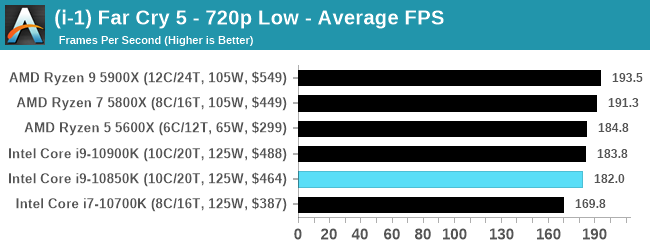 |
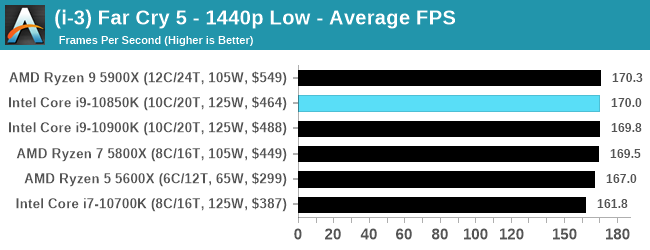 |
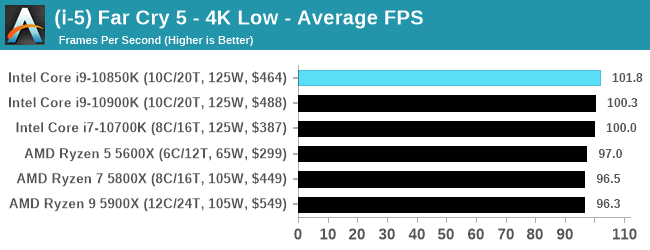 |
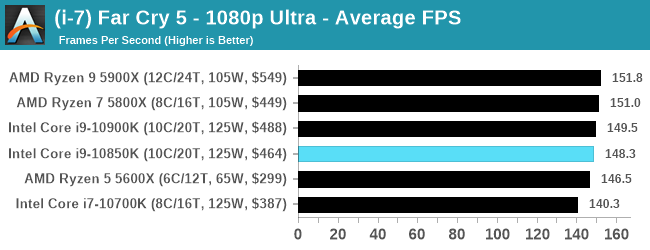 |
| 95th Percentile | 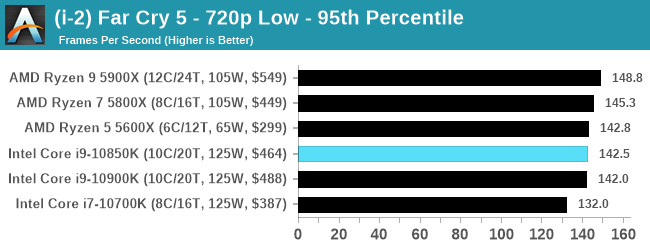 |
 |
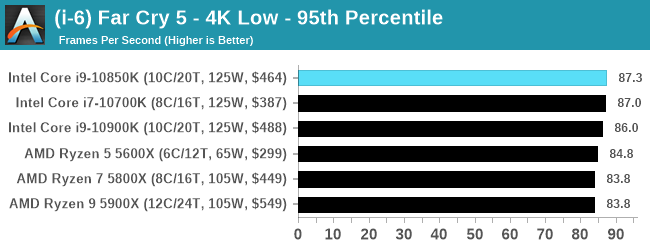 |
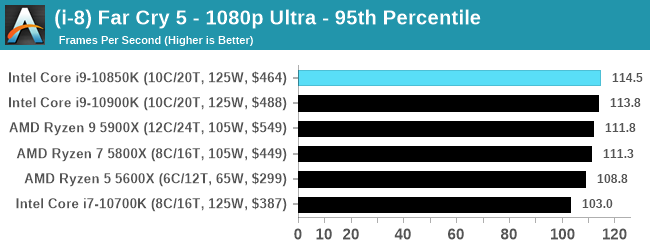 |
All of our benchmark results can also be found in our benchmark engine, Bench.


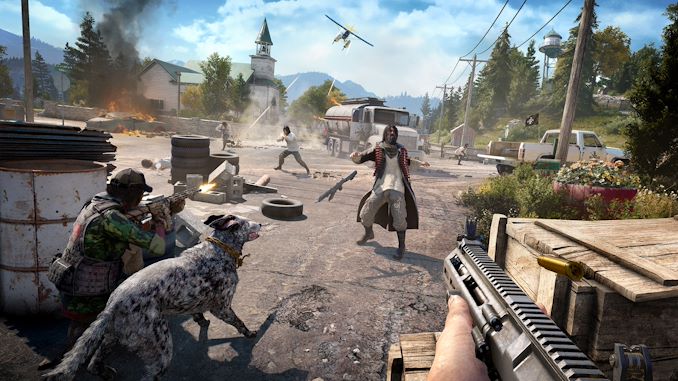









126 Comments
View All Comments
Deicidium369 - Monday, January 4, 2021 - link
And TSMC is really killing the fabrication front with the inability to ship anything in meaningful numbers - due to a extremely fragile supply chain - other than Apple - everything else in still on some variation of TSMC's 10nm class process - they call "7nm"sadick - Monday, January 4, 2021 - link
You are right, but Intel desktop CPUs are manufactured on the 14nm process since 2014!!! Ok, it's 14++++ now, but what an evolution, I'm very impressed ;-)I'm not an AMD fan boy, actually using a i7-9700k!
regsEx - Thursday, January 7, 2021 - link
At least they are much cheaper. 10-core 10850K cost same as 6-core 5600X.Impostors - Monday, January 4, 2021 - link
So is apple? Lmfao you thought they were making the chips? TSMC isn't behind on production, they are the production for literally everyone, from PC to mobile.name99 - Monday, January 4, 2021 - link
"you could argue that was the right call given the state of the market"Only if you drank your own koolaid about the end of Moore's Law...
Remember a book called _Only the Paranoid Survive_? About how in High Tech there are *constant* upsets and changes, nothing ever stays the same?
Hmm, if only someone at Intel had read that book and though "Gee, this seems to describe an industry very much like the one in which we operate"...
0ldman79 - Saturday, January 9, 2021 - link
Playing it safe would have been fine if they had a product to release afterwards.Thing is they didn't. They got so cocky they screwed up their fabs, reached too far while physics are only getting tougher to overcome.
TSMC made 7nm work, whether it hit their target density and speed goals or not it works. Intel had a goal and rather than back off as needed to release a product they kept fighting to hit an ego check-mark. When 10nm didn't work they should have backed off the density and tried again in order to release a product. Ultimately that's what they had to do but they did it 3 years too late.
WaltC - Monday, January 4, 2021 - link
M1 has very little in software and hardware compatibility to recommend it, however. Those are the #1 reasons people buy computer systems--raw performance is merely icing on the cake. AMD blows the M1, and Intel CPUs, away, imo. As it sits today, the M1 is not competitive with AMD (or even Intel, actually) in terms of multithreaded performance desktops & enterprise-level offerings. I very much doubt Apple will be going there--but we shall see...M1 as it sits is a good beginner's start...let's see where it goes from there.Great_Scott - Monday, January 4, 2021 - link
The techie rant from the early 2000's is coming to pass, finally.So many programs are either mobile or browser-based that the M1 is going to get a pass on compatibility.
Apple got lucky on the timing, in other words.
name99 - Monday, January 4, 2021 - link
Geniuses (and genius companies) make their own timing...Seems kinda bizarre to consider the rise of mobile computing as an exogenous factor when discussing Apple!
Calin - Tuesday, January 5, 2021 - link
Just read an article about Flash no longer being supported... and it was instead replaced by HTML5 and the like...Guess that genius companies really are lucky indeed ;)